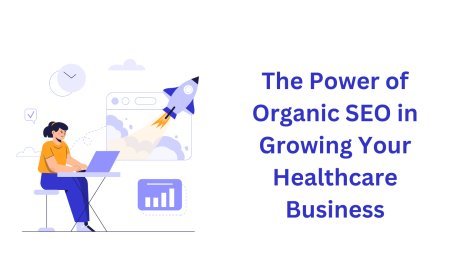Cloud Migration Services USA: A Complete Guide

Cloud migration involves moving digital assets, workloads, and applications from on-premises infrastructure to the cloud. Businesses in the USA rely on cloud migration services to enhance efficiency, scalability, and security while reducing operational costs.
2. Why Businesses Opt for Cloud Migration
Companies migrate to the cloud to achieve agility, better resource utilization, and cost savings. Cloud migration services USA provide customized strategies to streamline transitions. Businesses also gain access to powerful computing resources and enhanced collaboration.
3. Types of Cloud Migration Strategies
Cloud migration strategies include rehosting, refactoring, repurchasing, re-platforming, and retiring. Choosing the right approach depends on business goals, budget, and existing infrastructure. Experts analyze workloads and recommend the best migration path.
4. Benefits of Cloud Migration Services USA
Cloud migration enhances performance, improves data security, and ensures compliance with industry standards. Businesses gain resilience against cyber threats and minimize downtime. It also supports remote work, improving productivity and team collaboration.
5. Challenges in Cloud Migration
Despite its advantages, cloud migration presents challenges like security risks, compatibility issues, and data transfer complexities. Proper planning, testing, and risk assessment ensure a smooth transition while mitigating disruptions to business operations.
6. Cloud Migration Process Step-by-Step
The process involves assessment, planning, execution, testing, and optimization. Businesses evaluate workloads, determine migration feasibility, execute the transition, validate functionality, and fine-tune configurations for optimal performance in the cloud.
7. Popular Cloud Platforms in the USA
AWS, Microsoft Azure, and Google Cloud dominate the US market. These platforms offer flexible pricing, high scalability, and security features. Businesses choose based on reliability, compliance needs, and technical capabilities.
8. Security Considerations in Cloud Migration
Data encryption, access controls, and compliance with regulations like HIPAA and GDPR are critical in cloud migration. Businesses must implement robust security policies to protect sensitive information from unauthorized access and breaches.
9. Cost Considerations for Cloud Migration
Cloud migration reduces hardware maintenance and operational expenses. However, businesses must account for hidden costs like data transfer fees and re-architecting applications. Cost optimization strategies ensure maximum return on investment.
10. Hybrid and Multi-Cloud Migration
Hybrid cloud combines on-premises and cloud environments, offering flexibility and security. Multi-cloud adoption prevents vendor lock-in and enhances redundancy. Businesses select these models based on workload demands and compliance requirements.
11. Future Trends in Cloud Migration
As cloud technology evolves, new trends shape the way businesses migrate and manage workloads. AI-driven automation simplifies migration, reducing manual intervention and improving efficiency. Serverless computing eliminates the need for infrastructure management, allowing businesses to focus on innovation.
Edge computing enhances performance by processing data closer to users, reducing latency. This is crucial for industries like healthcare, finance, and IoT. Hybrid cloud adoption continues to rise, enabling businesses to combine private and public cloud benefits while maintaining security.
Sustainability is also a growing focus in cloud migration. Companies choose green cloud solutions that optimize energy consumption and reduce carbon footprints. Cloud providers are investing in renewable energy sources to support eco-friendly operations.
13. Common Mistakes to Avoid in Cloud Migration
Many businesses rush cloud migration without proper assessment, leading to security risks and performance issues. Inadequate planning results in unexpected costs and data loss. A detailed strategy ensures smooth execution.
Ignoring compliance requirements can lead to legal and financial consequences. Businesses must adhere to industry regulations like HIPAA, GDPR, or SOC 2. Partnering with experts helps mitigate compliance challenges.
Lack of employee training can slow adoption. Cloud-based environments require new skill sets, so organizations must invest in training programs to ensure teams efficiently manage cloud resources and security protocols.
14. Cloud Migration for Small and Medium Businesses (SMBs)
SMBs benefit from cloud migration by reducing IT infrastructure costs and improving operational efficiency. Cloud solutions offer scalability, allowing businesses to expand without heavy upfront investments in hardware.
Security and compliance are key concerns for SMBs. Cloud providers offer built-in security features, but businesses must implement strong access controls and encryption measures to protect sensitive data.
Choosing the right cloud model—public, private, or hybrid—is crucial for SMBs. Public clouds provide cost-effectiveness, while private clouds offer enhanced security. Hybrid models balance both aspects for optimal performance.
15. Cloud Migration for Large Enterprises
Enterprises with complex IT infrastructures require a phased migration approach. A detailed roadmap minimizes disruptions and ensures smooth transition without affecting business operations or customer experience.
Data governance and security play a significant role in enterprise cloud migration. Businesses must implement identity and access management (IAM) policies, encryption, and compliance measures to secure data.
Integration with existing systems is another challenge. Enterprises must ensure compatibility with legacy applications and optimize workloads for cloud environments to maximize efficiency and performance.
FAQs
1. What is cloud migration?
Cloud migration is the process of moving applications, data, and workloads from on-premises infrastructure to cloud environments like AWS, Azure, or Google Cloud.
2. How long does cloud migration take?
The timeline varies based on data volume, complexity, and migration strategy. Small migrations take weeks, while large-scale enterprise migrations can take months.
3. What are the risks of cloud migration?
Potential risks include data loss, security vulnerabilities, downtime, and compliance challenges. Proper planning and expert guidance mitigate these risks.
4. Is cloud migration cost-effective?
Yes, cloud migration reduces IT expenses by eliminating hardware costs and offering flexible pricing models. However, organizations must optimize cloud spending to maximize savings.
5. Which cloud provider is best for migration?
AWS, Azure, and Google Cloud are top choices. Selection depends on business needs, budget, scalability, and security requirements.
What's Your Reaction?


































































